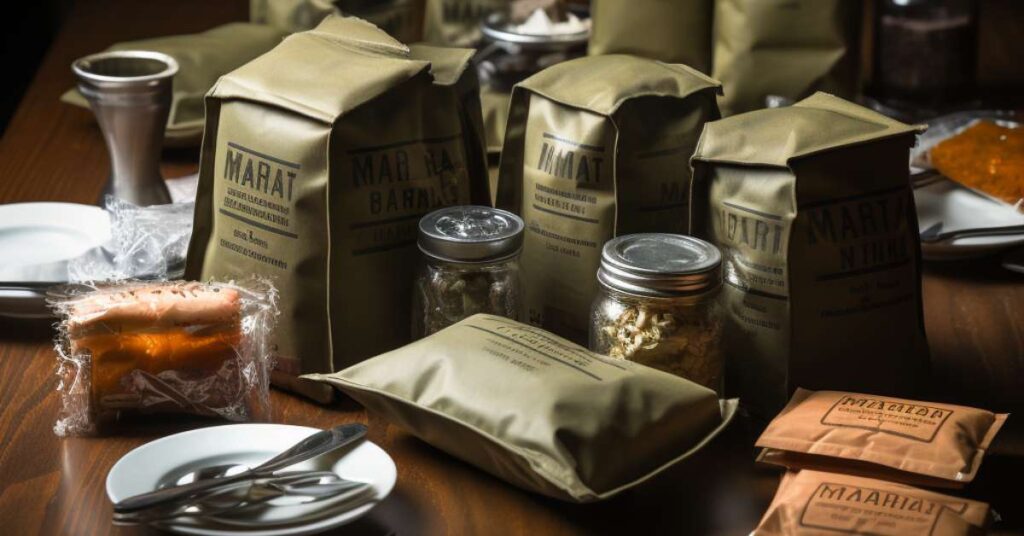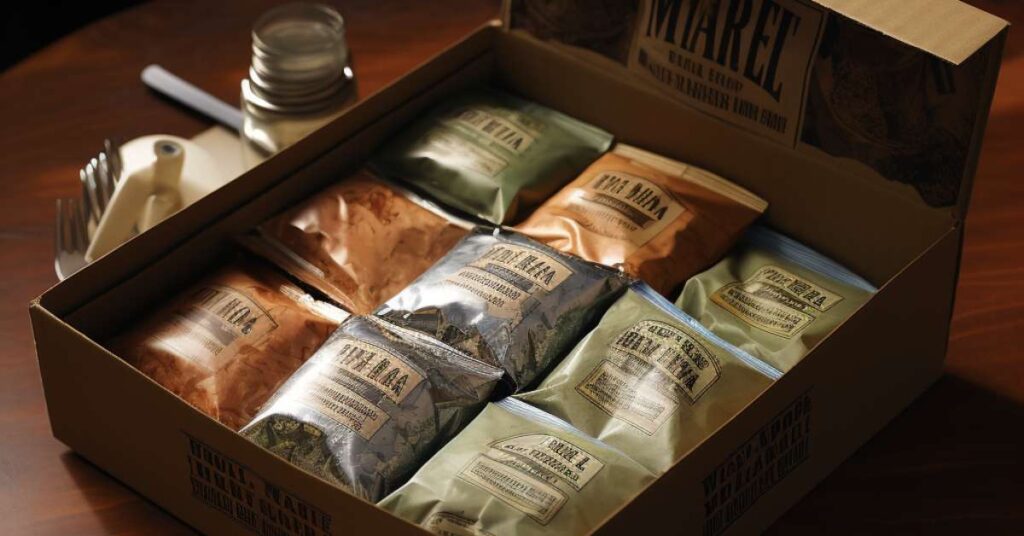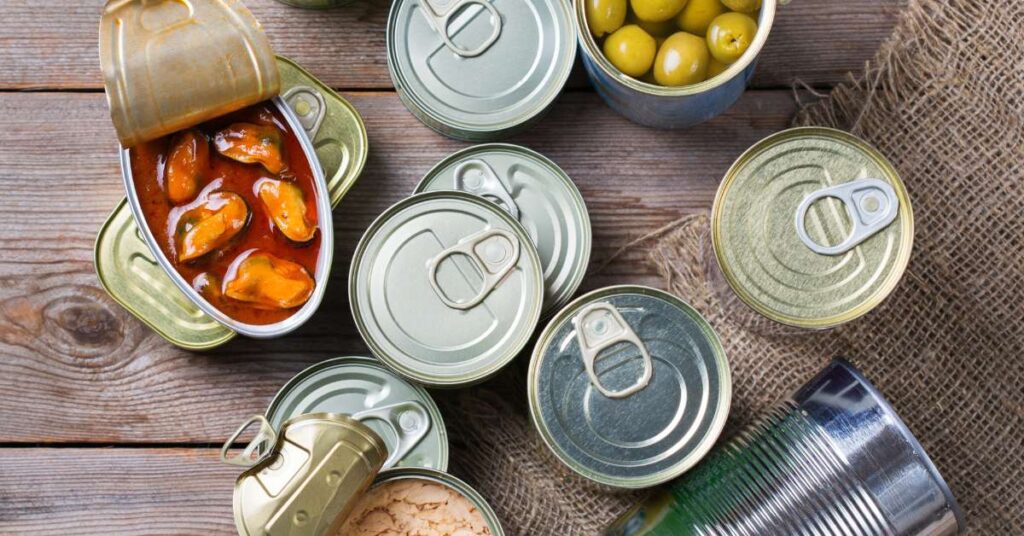In the realm of ready-to-eat meals, MREs (Meals, Ready-to-Eat) are legendary for their convenience, especially among soldiers and outdoor enthusiasts. But if you’re considering them for regular consumption or in emergency scenarios, you might wonder how many MREs you’d need in a day.
How many MREs per day largely depends on individual calorie requirements and activity levels. Generally, military guidelines suggest 2-3 MREs daily to meet the high-caloric needs of active soldiers. However, civilians with moderate activities might require fewer.
Keen on understanding the intricacies of MRE consumption? Dive into the science behind these compact meals, learn about their nutritional content, and discover how to balance them with other food sources. Whether you’re an adventurer, prepper, or simply curious, get ready for a comprehensive guide to fueling with MREs.
Understanding MREs: A Brief Overview
MREs, or Meals Ready-to-Eat, have been a staple for military personnel for decades, but their convenience has attracted civilians too. From their compact design to the rich nutritional value they offer, MREs are both intriguing and functional. Delving into what makes an MRE and understanding their nutritional profile can provide insight into their daily consumption recommendations.
What is an MRE?
An MRE, which stands for Meal, Ready-to-Eat, is a packaged meal designed primarily for military personnel. They come self-contained, which means everything you need for a meal is inside the package. Their origins lie in the need for portable, durable meals that could be eaten in any condition, from the heat of a desert to the chill of a mountain peak.
Each MRE contains a main dish, a side dish, a dessert or snack, and assorted accessories like coffee or chewing gum. The goal of an MRE is not just to provide energy but also to give troops a small comfort in stressful situations. Hence, the variety in meals, from beef stew to chicken curry, offers diversity in taste while ensuring dietary requirements are met.
The packaging of an MRE is integral to its design. Not only does it need to protect the food from external elements, but it also needs to be lightweight and durable enough to handle the rough conditions of military operations. Thus, the tough exterior and vacuum sealing are essential to its longevity and usability.
Nutritional Content and Caloric Breakdown
Each MRE is designed to provide a balanced diet with an average of 1,200 to 1,300 calories. Carbohydrates offer immediate energy, protein helps in muscle repair and building, and fats provide a long-lasting energy source. Vitamins and minerals are added to ensure optimal health, especially under physically demanding conditions.
The caloric distribution of an MRE leans heavily towards carbohydrates, given the immediate energy needs of soldiers. However, they are not void of proteins and fats, making them nutritionally rounded. They also contain electrolytes, ensuring that soldiers remain hydrated and avoid muscle cramps in various climates.
However, one needs to remember that while these meals are calorie-dense, they’re designed for physically active soldiers. Civilians or those with a sedentary lifestyle might find them excessive if not balanced out with physical activity. Monitoring and understanding one’s personal caloric needs is crucial when consuming MREs regularly.
Daily MRE Consumption: Factors to Consider

When it comes to determining the number of MREs to consume daily, a one-size-fits-all approach doesn’t work. Everyone’s energy needs differ based on numerous factors. From your daily activity levels to specific situations you’re preparing for, here’s a deeper dive into those considerations.
Activity Level and Energy Expenditure
Activity levels play a crucial role in determining MRE consumption. A soldier in the field might burn thousands of calories in a day, justifying the consumption of 2-3 MREs. This level of activity involves not just regular walking but also tasks like lifting, climbing, or even combat.
For the average civilian, such levels of exertion are uncommon. Thus, a regular person hiking or camping might need only 1-2 MREs a day. Overconsumption without the requisite physical activity can lead to weight gain, as these meals are calorie-dense.
It’s also essential to differentiate between various physical activities. For instance, a day’s trek in the mountains will require more calories than a leisurely day at a campsite. Thus, understanding one’s energy expenditure can help determine the number of MREs needed.
Specific Needs and Contexts
Not all scenarios that require MREs are the same. An emergency situation, like a natural disaster, might require reliance on MREs for sustenance, but they might need to be rationed if the emergency’s duration is unknown. Here, the emphasis is on survival rather than balanced nutrition.
In contrast, someone using MREs for convenience during a camping trip has more flexibility. They can choose to mix MREs with regular food, depending on availability and preference. The objective here is less about survival and more about convenience and nutrition.
It’s also worth noting that everyone’s body is different. Individuals might have specific dietary restrictions or medical conditions that influence their choice and quantity of MRE consumption. It’s always a good idea to consult with a nutritionist or medical professional if you plan to rely on MREs for an extended period.
You might be interested in checking out our list of survival food you can get from the grocery store.
Optimal MRE Consumption: Guidelines and Recommendations

Knowing about MREs is one thing, but understanding the optimal consumption can be the key to maximizing their benefits. Whether you’re a soldier, a camper, or a prepper, there are guidelines to help you make the best choices.
How Many MREs for Different Groups
Military personnel, given their intense activity levels, might require 2-3 MREs a day to sustain themselves. However, for hikers or campers, a combination of 1-2 MREs supplemented with other foods might be more suitable. In emergency situations, rationing might become necessary, and one MRE a day could be enough to survive.
Preppers, those preparing for long-term emergencies, might store MREs for their shelf life and convenience. However, their daily consumption would depend on the nature and duration of the emergency. It’s always wise to have a mix of food sources to ensure balanced nutrition.
Finally, for those curious about MREs and trying them out of interest, one MRE occasionally is more than sufficient. Remember, these meals are designed for high-energy demands, and regular consumption without corresponding physical activity might not be advisable.
You might be interested to check out our list of 30-year shelf life food.
Potential Side Effects and Precautions
MREs, for all their benefits, can have side effects when consumed in excess or for prolonged periods. Some individuals might experience digestive issues, primarily due to the meals’ low fiber content. It’s essential to supplement with fiber-rich foods if relying on MREs for extended durations.
Furthermore, MREs are high in sodium, a preservation necessity. Overconsumption can lead to dehydration, so it’s crucial to consume plenty of water. Balancing MREs with fresh foods can also help offset the high sodium levels.
Lastly, while allergies to MRE components are rare, it’s always a good idea to check the ingredients if you have known food allergies. These meals are designed to cater to a broad audience, so some ingredients might not sit well with everyone.
Alternatives and Complements to MREs
While MREs are undoubtedly convenient, there’s a world of other emergency food options to explore. Combining MREs with other foods not only provides variety but can also address any nutritional gaps.
Combining MREs with Natural Foods
Balancing MREs with natural foods can lead to a more nutritious and palatable diet. Fresh fruits and vegetables, when available, can provide the necessary fiber and vitamins often missed in processed foods. They also offer a refreshing taste change from the standard MRE flavors.

Grains, legumes, and nuts can also be excellent supplements. They provide additional protein, healthy fats, and complex carbs that can balance out an MRE-based diet. Plus, they’re often non-perishable and can be stored for long durations, making them excellent additions to emergency kits.
Lastly, integrating dairy or dairy alternatives can help with calcium and vitamin D intake. While MREs do provide these to some extent, fresh sources are always better for absorption and overall health.
Other Emergency Food Options
MREs aren’t the only long-lasting food solution. Freeze-dried meals, while similar in concept, offer a different taste and texture profile. They’re lightweight and just require water to prepare, making them ideal for backpacking.
Canned goods, from soups to fruits, have long shelf lives and provide variety. They can be heavier to transport but are excellent for stationary emergency kits. Non-perishable snacks, like granola bars or dried fruits, can also supplement nutrition and offer quick energy boosts.

When preparing for emergencies or long trips, it’s wise to have a mix of these options. This variety ensures not just nutritional balance but also prevents palate fatigue, which can be crucial in prolonged emergency situations.
You might also be interested in reading about healthy, inexpensive MREs & alternatives.
Making the Most of MREs
Meals Ready-to-Eat are a marvel of modern food engineering, providing sustenance in compact packages. While they’re invaluable for military operations and emergency situations, it’s essential to strike a balance when relying on them. By understanding their nutritional makeup and complementing them with other food sources, one can make the most of MREs, ensuring optimal health and well-being in any scenario.
